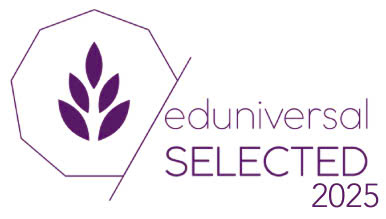- Eduniversal
-
Business Schools Ranking
-
Africa
- Algeria
- Angola
- Benin
- Cabo Verde
- Cameroon
- Congo
- Djibouti
- Egypt
- Eswatini
- Ethiopia
- Gabon
- Ghana
- Ivory Coast
- Kenya
- Lesotho
- Madagascar
- Malawi
- Mali
- Mauritania
- Mauritius
- Morocco
- Mozambique
- Namibia
- Nigeria
- RDC
- Rwanda
- Senegal
- Sierra Leone
- Somalia
- South Africa
- Sudan
- Tanzania
- Togo
- Tunisia
- Uganda
- Zambia
- Zimbabwe
- Central & Eastern Europe
- Central Asia
- Eurasia & Middle East
- Far East Asia
- Latin America
- North America
- Oceania
- Western Europe
-
Africa
- Schools of Excellence by field
- Awards
- News
- Contact
Summary:
This article explores the evolving landscape of business education in Iran. It analyzes key trends, challenges, and strategic opportunities as Iranian business schools align with national economic visions and global standards by 2025.
Iran’s Business Education Landscape in Transition
Business schools in Iran are evolving within a complex economic and educational landscape marked by demographic shifts, governmental goals, and technological development initiatives aimed at 2025 and beyond.
They play a critical role in equipping a growing youth population with managerial and entrepreneurial competencies needed to integrate into both local and global markets.
Iran’s economy, with aspirations for industrial diversification and technological advancement, contextualizes business education as a strategic tool for addressing skills gaps, fostering innovation, and sustaining economic growth.
The higher education market in Iran, valued at approximately USD 113 million in 2024 and projected to reach over USD 576 million by 2033, includes expanding private and non-governmental academic institutions that complement state universities by offering accessible, professionally oriented programs aligned with labor market needs. Business schools in Iran thus serve as key institutions in training graduates capable of navigating a rapidly changing business environment.
Digital Innovation Transforming Iran’s Business Schools
For 2025, several trends are shaping Iran’s business education sector:
- Digital Transformation and EdTech Integration: The rising role of AI, personalized learning platforms, and extended reality (XR) are fundamental trends impacting Iranian education, including business schools. Iran’s national AI initiatives aim to democratize AI literacy, which influences business education by enabling adaptive learning, instant feedback, and customized course content to enhance student outcomes. Despite infrastructural and governance challenges, EdTech startups and governmental support are driving innovation in educational delivery.
Neighboring regions like Kazakhstan are also embracing these technologies, offering potentials for regional digital collaboration between business schools.
Internationalization Amid Geopolitical Constraints
Internationalization and Collaborations: Although Iran still faces geopolitical and economic sanctions impacting foreign direct investment and international academic ties, recent efforts seek to promote digital and educational cooperation internationally.
This trend is critical as Iranian institutions strive to enhance global standing and attract diverse student cohorts.
Learning from similar efforts in nations such as Armenia can offer strategic insights for forming global academic alliances despite diplomatic limitations.
Curriculum Evolution and Emerging Business Themes
Emerging Specializations and Curricular Alignment: There is growing demand for business programs with a strong emphasis on entrepreneurship, sustainability, FinTech, and digital economy skills.
The curricula increasingly integrate experiential learning, industry projects, and local economic contexts to improve employability and retention of graduates in secondary cities, helping to counter talent outmigration to major urban centers.
This mirrors developments across business schools in Pakistan where entrepreneurship and local economic integration are also becoming key aspects of modern curricula.
Embedding Sustainability and Strengthening Corporate Ties
Sustainability and Corporate Partnerships: Reflecting global imperatives, Iranian business schools are embedding sustainability principles into their programs and expanding partnerships with local industries and municipal governments.
These relationships enrich practical learning opportunities, foster innovation ecosystems, and enhance community impact.
Similar trends can be observed in Jordanian business schools, where programs are leaning heavily into green economics and regional partnership strategies to promote sustainable development and skill alignment.
Persistent Challenges in Iranian Business Education
- Funding Constraints and Operational Flexibility: Despite growth in private sector education, funding remains a limiting factor. Many public institutions face budgetary restrictions, while private universities rely on tuition fees and industry collaborations for sustainability.
- Competitiveness and Talent Attraction: Business schools must compete not only domestically but increasingly with rising Asian schools and Western institutions in business education rankings. Limited global visibility and geopolitical factors hinder attracting top global faculty and students.
- Evolving Skill Requirements: Rapid technological change demands continuous updating of programs to incorporate digital skills, AI competency, and entrepreneurial mindset. This adaptation is essential amidst emerging economic sectors within Iran.
- Infrastructure and Governance Barriers: Inadequate IT infrastructure and centralized governance pose obstacles to scalable EdTech adoption and educational innovation, limiting the potential for personalized learning and digital transformation.
These challenges are not unique to Iran. Business schools in Egypt also face comparable hurdles in adapting governance and infrastructure to support educational innovation.
Seizing Opportunities for Impact and Growth
- Driving Regional Economic Development: By contextualizing curricula for local industries and supporting start-ups and SMEs via incubators and alumni networks, business schools can act as engines for regional talent retention and economic diversification.
- Innovations in Pedagogy and Technology: Leveraging AI, XR, and adaptive learning platforms can transform educational delivery and outcomes, creating more engaging and effective business education.
- Expanding Private Sector Engagement: Increased collaboration with industries promises enhanced practical relevance of programs, better employment outcomes, and diversified funding sources that add operational flexibility.
- Capitalizing on Demographic Dividend: Iran’s youthful population offers a growing student base, particularly if business schools align programs with the evolving expectations of digital-native students who seek flexible, tech-enabled educational experiences.
This strategy is similar to practices found in countries like Vietnam, where private sector engagement and digitization are reshaping business education to meet employer demands.
A Strategic Outlook: Transforming for Global Relevance
In conclusion, Iranian business schools stand at a pivotal juncture where embracing digital innovation, fostering deeper industry partnerships, and aligning education with both local and global market needs can significantly enhance their impact and competitiveness.
Strategic investments in infrastructure, curriculum design, and international collaboration will be crucial to transforming these institutions into dynamic hubs of business leadership and economic growth within Iran’s evolving socio-economic context.
Business schools that lead this transformation will not only contribute to national development but also position themselves as influential players in global business education by 2025 and beyond.
This calls for concerted action by educators, policymakers, and industry stakeholders to support sustainable, tech-enabled, and regionally relevant business education models.
For comparisons and rankings globally, explore business school listings in Malaysia or Russia.
Business Schools Ranking in Iran
|
2 Palmes of Excellence Good Business Schools with strong regional influence |
Rank Position in
Palmes’ League |
Deans’ Recommendation
rate 2025 |
|---|---|---|
| 1 | 64 ‰ |
|
1 Palme of Excellence Business Schools with considerable local influence |
Rank Position in
Palmes’ League |
Deans’ Recommendation
rate 2025 |
|---|---|---|
| 1 | 26 ‰ |
The Eduniversal Selected Schools list aims to highlight institutions by country are not yet eligible for a Palmes of Excellence League entry but are on a positive path toward achieving it.
The schools on the Eduniversal Selected list have been recognized by Eduniversal for their innovative projects, disruptive energy, and growing potential.
The schools on the Eduniversal Selected list have been recognized by Eduniversal for their innovative projects, disruptive energy, and growing potential.
Faculty of Entrepreneurship - University of Tehran
School of Economics, Management & Social Sciences - Shiraz University






